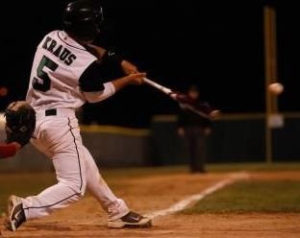 Every player is unique. Each batter has a different swing. Each pitcher has a different delivery. As players get older, hopefully they are being helped to learn what makes them the best they can be.
Every player is unique. Each batter has a different swing. Each pitcher has a different delivery. As players get older, hopefully they are being helped to learn what makes them the best they can be.
Hitters are learning what the best place is for their hands to be when the pitcher is about to release the ball. When do they need to get their front foot on the ground to insure they will be in the best position possible when the pitch gets into the contact area. The biggest issue you see with hitters, especially youth, is their lack of being taught what it means to be “on time” when the pitch gets to them.
Pitchers need to know what makes them tick too. What they need to feel pitch after pitch. Where they need to feel smooth. Where does the separation of their hands need to happen. What is their best arm stroke in the back.
All this comes with rep after rep. Learning what works best for you/them. Hopefully at some point in a players life, they end up in front of someone who understands this and can help the player to understand themselves and what makes them the best possible player they can be.
By knowing yourself and your swing or delivery will allow you to make quicker in game adjustments. If you take a bad swing, you need to be able to make an adjustment on the next one. If you throw a pitch up and arm side, you need to know yourself so well that you can fix it on the next pitch.
The ability to make quick adjustments is a huge part of this game. It is in fact one of the biggest things we work on at the pro level.





 If you are fortunate enough to play this game for a long time, you will have many firsts. The first time you walk into a clubhouse. The first time you meet your teammates. The first time you take a swing in the cage. The first time you throw a pitch off the mound in a bullpen. These are all firsts that will get the butterfly’s going a little.
If you are fortunate enough to play this game for a long time, you will have many firsts. The first time you walk into a clubhouse. The first time you meet your teammates. The first time you take a swing in the cage. The first time you throw a pitch off the mound in a bullpen. These are all firsts that will get the butterfly’s going a little.  Every big league hitter starts their day in the cage by hitting the ball the other way. One, this helps us stay back on the ball and keep our weight where we need it to be. Two, this is a skill that every good hitter needs to have. At some point, you will get up to bat and it will be your job to move the runner over by hitting the ball the other way. When you are on the tee, set it up deeper in your stance and work on staying inside the ball and driving it the other way. When doing soft toss, or front toss, have your thrower toss them away so you can get comfortable with this. Finally, the beginning of your first round of batting practice should be focused on hitting it the other way. Like I said earlier, every good hitter can do this on command, can you?
Every big league hitter starts their day in the cage by hitting the ball the other way. One, this helps us stay back on the ball and keep our weight where we need it to be. Two, this is a skill that every good hitter needs to have. At some point, you will get up to bat and it will be your job to move the runner over by hitting the ball the other way. When you are on the tee, set it up deeper in your stance and work on staying inside the ball and driving it the other way. When doing soft toss, or front toss, have your thrower toss them away so you can get comfortable with this. Finally, the beginning of your first round of batting practice should be focused on hitting it the other way. Like I said earlier, every good hitter can do this on command, can you? Once we step in the box, we are ready to hit. Look fastball and adjust to the off speed pitches. If we step in the box and are committed to an off speed pitch, the chances of us catching up to the fastball are very slim. Many times a hitters mind will get going way too fast, with too many thoughts and guesses, and step in the box not focused on what they need to be focused on. This will never equal a good result. Have a plan before you even get to the plate for the first pitch. You will more than likely need to make adjustments during the at bat, but never step in the box until your mind is calm and ready!
Once we step in the box, we are ready to hit. Look fastball and adjust to the off speed pitches. If we step in the box and are committed to an off speed pitch, the chances of us catching up to the fastball are very slim. Many times a hitters mind will get going way too fast, with too many thoughts and guesses, and step in the box not focused on what they need to be focused on. This will never equal a good result. Have a plan before you even get to the plate for the first pitch. You will more than likely need to make adjustments during the at bat, but never step in the box until your mind is calm and ready!